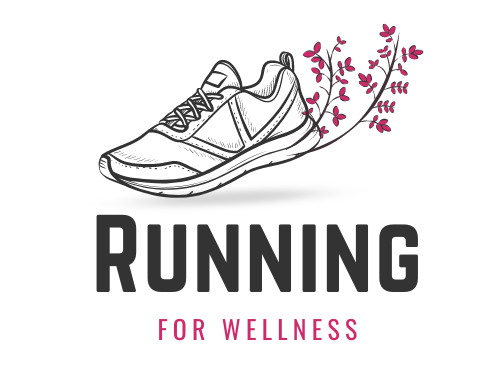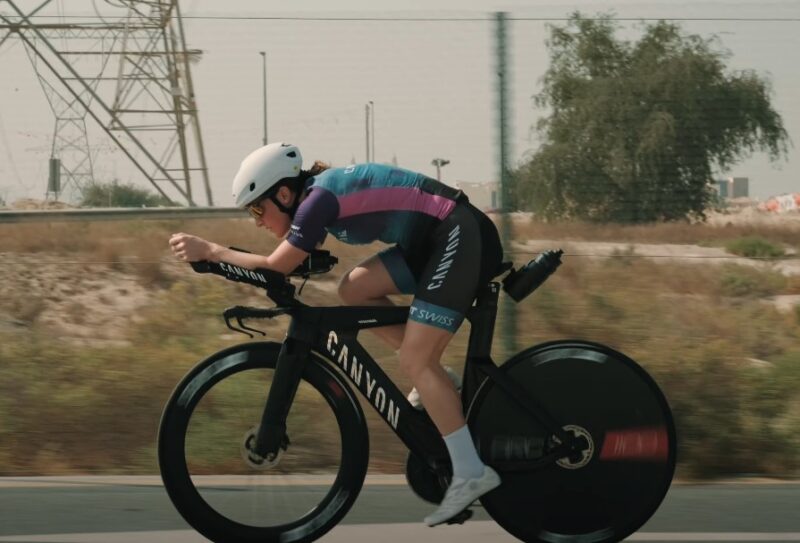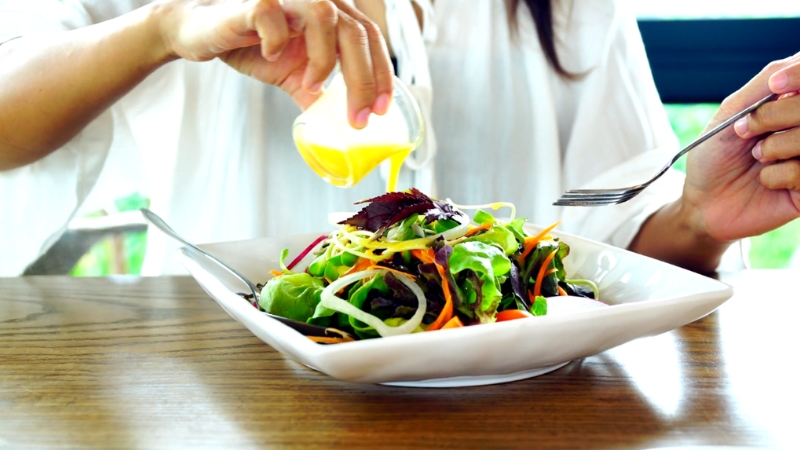Nutrition is a cornerstone of triathlon success, acting as a critical factor in enhancing performance and ensuring optimal recovery.
Triathlons push athletes through the grueling swim, bike, and run stages, each demanding exceptional endurance, strength, and resilience.
The level of effort cannot be sustained without a well-structured diet tailored to the physiological requirements of such events.
A triathlon-specific diet not only supports energy levels during the race but also aids in muscle recovery and hydration, ensuring athletes can maintain peak form.
Pre-Race Nutrition
Pre-race nutrition plays a pivotal role in ensuring optimal performance during a triathlon.
It sets the stage for sustained energy, hydration, and recovery, allowing athletes to push their limits without succumbing to fatigue or dehydration.
A well-thought-out nutrition plan should be implemented well before race day, focusing on glycogen storage and hydration strategies that prepare the body for the grueling demands ahead.
Carb Loading
Carbohydrate loading, or carb loading, is an essential pre-race strategy aimed at maximizing glycogen stores in the muscles and liver.
The practice ensures the body has ample energy reserves to sustain prolonged high-intensity efforts during the race.
To achieve effective carb loading:
- Daily Intake: Increase carbohydrate consumption to 8–10g per kilogram of body weight daily.
- Timing: Begin 36–48 hours before the race to ensure adequate glycogen storage.
- Food Choices: Prioritize low-fiber, low-fat, and low-protein carbohydrate sources such as:
- Pasta, rice, or white bread.
- Pancakes with minimal syrup.
- Mashed potatoes without added butter or cream.
These foods reduce the risk of digestive discomfort while providing easily accessible energy.
Hydration
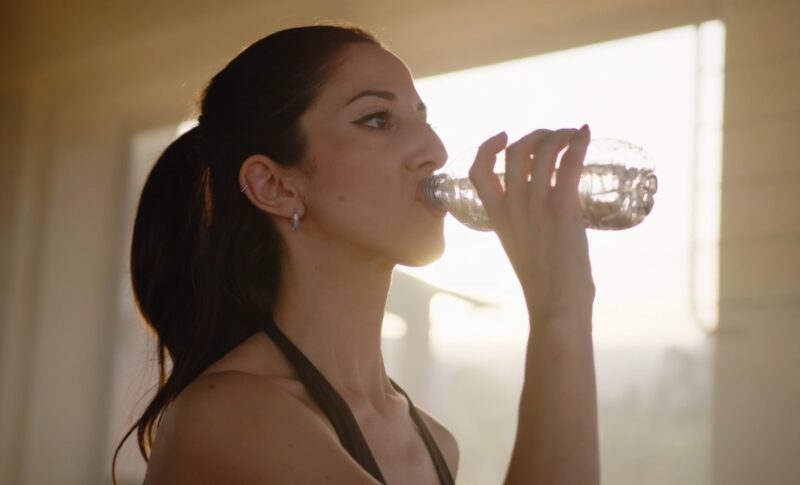
Hydration is equally critical in the days leading up to the race. It is not just about drinking water but also ensuring proper electrolyte balance to support optimal muscle and nerve function.
A strategic hydration plan should include:
- Electrolyte Replenishment: Incorporate sodium-based drinks or supplements to maintain electrolyte levels.
- Fluid Intake: Gradually increase water consumption, but avoid overhydration, which can dilute sodium levels and lead to hyponatremia.
- Avoid Diuretics: Limit caffeine and alcohol, which can dehydrate the body.
Race Day Nutrition

On race day, a triathlon-specific diet becomes the cornerstone of energy management and endurance.
Properly fueling your body during each phase of the event ensures that energy levels remain consistent, recovery processes are supported, and performance is optimized.
The three segments of a triathlon, swim, bike, and run, place distinct nutritional demands on the body.
Breakfast and Pre-Race Snack
The first meal of the day sets the tone for energy availability during the race.
A light, carb-focused breakfast is recommended, typically consumed 2–3 hours before the event to allow for digestion.
Options include:
- Toast with honey or jam
- A banana with peanut butter
- Low-fiber cereal with a small amount of milk
Closer to the start time, pre-race snacks, such as energy gels, chews, or electrolyte-infused drinks, offer a quick carbohydrate boost.
These should be consumed 30–60 minutes before the race to ensure a readily available energy source.
The focus here is on simplicity and digestibility to prevent any discomfort during the race.
During the Race
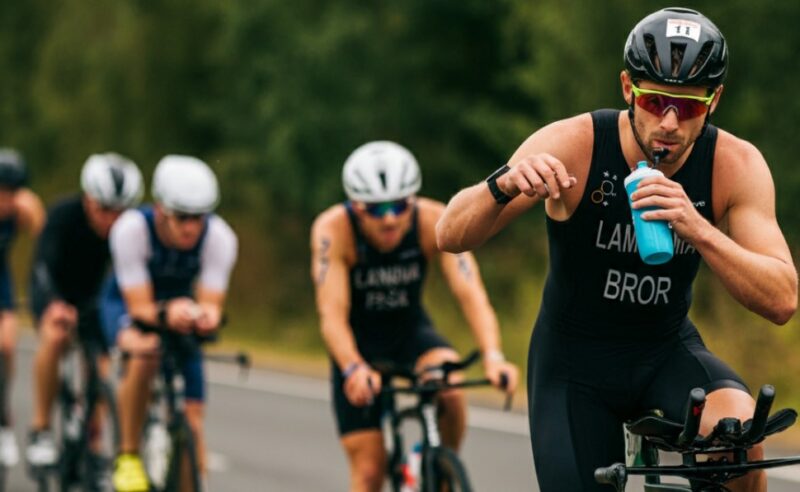
Each segment of the triathlon demands a nuanced approach to nutrition, with a triathlon-specific diet playing a critical role:
Swim Stage
Minimal fueling is required during this phase due to its shorter duration and logistical challenges.
Athletes should focus on conserving energy for the subsequent bike leg.
Bike Stage
This phase provides the best opportunity for fueling, given its duration and the ability to consume solids or liquids while cycling.
Athletes should aim for 60–90g of carbohydrates per hour, which can be achieved through:
- Energy drinks or carbohydrate-rich hydration solutions
- Gels or energy bars specifically designed for endurance sports
- Small snacks such as bananas or easily digestible carb sources
Sodium replenishment is equally important, as electrolyte balance helps prevent cramps and maintains hydration.
Run Stage
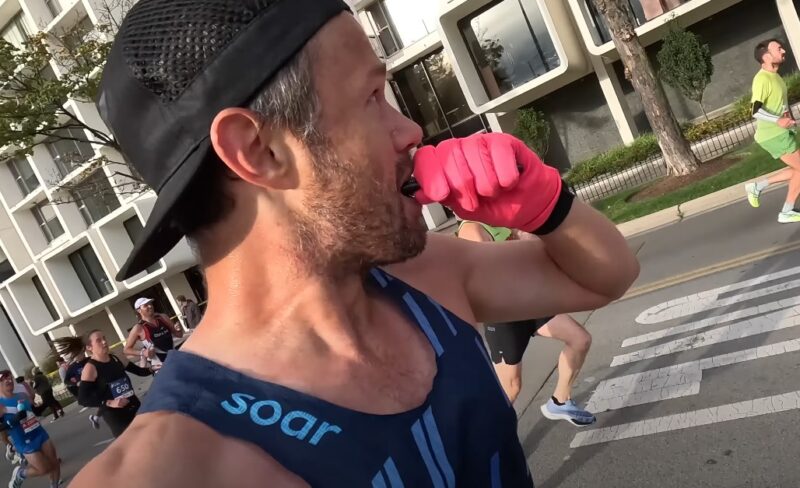
The run stage is particularly demanding, as the risk of gastrointestinal distress increases due to prolonged activity.
Athletes should aim for ~50g of carbohydrates per hour, adjusting based on individual tolerance. Options include:
- Energy gels were taken with water
- Electrolyte drinks with moderate sugar content
- Small sips of water or isotonic beverages every 10–15 minutes
Post-Race Nutrition
The hours following a triathlon are as critical as the preparation before the event.
A well-executed recovery plan ensures that athletes bounce back stronger and faster, ready for their next training session or race.
Triathlon-specific diets are not just about race-day performance but also play a significant role in post-event recovery.
The phase centers around the Four Rs:
- Refuel
- Repair
- Rehydrate
- Rest
Addressing these components systematically helps replenish energy, repair muscle damage, restore hydration, and support overall recovery.
Proper post-race nutrition is non-negotiable for athletes aiming to maintain peak performance over time.
Refuel
After a triathlon, glycogen stores are significantly depleted.
To restore these reserves, consuming 1.2g of carbohydrates per kilogram of body weight within the first two hours post-race is crucial.
Ideal carbohydrate sources include:
- Bananas, sweet potatoes, or oatmeal
- Carb-rich recovery drinks
A triathlon-specific diet emphasizes this step to ensure sustained energy replenishment and readiness for upcoming activities.
Repair

The intense demands of a triathlon often lead to microtears in muscles. Protein intake, 20–40g immediately after the race, aids in repairing this damage. Excellent protein sources include:
- Protein shakes with whey or plant-based protein
- Lean meats such as chicken or turkey
- Greek yogurt or cottage cheese
Rehydrate
During a triathlon, athletes lose a substantial amount of fluids and electrolytes through sweat. Rehydration post-race involves:
- Drinking fluids enriched with electrolytes to replace lost sodium, potassium, and magnesium
- Monitoring hydration levels through urine color, a pale yellow indicates adequate hydration
- Staying hydrated ensures efficient bodily functions and complements a triathlon-specific diet
Rest
Rest is often overlooked but is critical for recovery. Adequate sleep and relaxation enable the body to rebuild and rejuvenate. Tips for optimizing rest:
- Prioritize quality sleep (7–9 hours)
- Engage in low-intensity activities like stretching or yoga
Summary
A triathlon-specific diet is the backbone of race day success, enabling peak performance and effective recovery.
By planning and practicing tailored nutrition strategies during training, athletes can identify what works best for their needs.
Personalization, preparation, and consistent application of these strategies not only maximize performance but also enhance the overall triathlon experience.
Related Posts:
- How Can You Start a Career as a Running Coach?
- How Long Does It Take to Train for a Half Marathon?
- How Far Is a Half Marathon? Everything You Need to Know
- How To Recover From Muscle Inflammation Without Medication
- Lower Back Pain While Running? Here's What You Need to Know
- 6 Best Running Playlists Music for Every Pace and Mood
